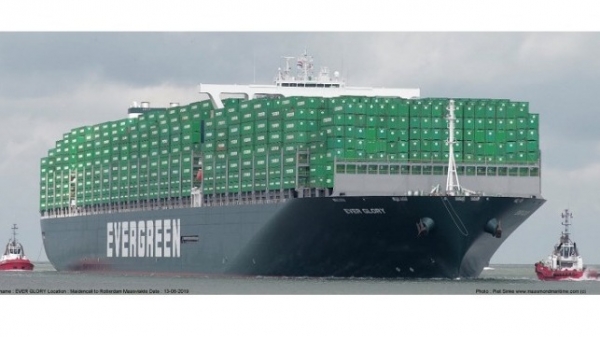News
Latest news
The Future of Tugs in a Changing World
Currently several means of transport and workboats are undergoing accelerated development towards automation and automated movement.
Almost daily publications appear about automation in shipping. Names of large maritime industrial companies are often found in these publications, giving the idea that they are a major driving force behind these developments.
The question can and should be asked, how realistic are these developments? Are they generally applicable, applicable for certain sectors or trades, or perhaps not applicable at all?
In the recently published book Tug Use in Port. A practical Guide, attention has been paid to future autonomous or remote controlled tugs. As a sequel to this specific item, a recently published report has addressed the question: How will tugs and tug assistance evolve in the coming 30 years? What are the factors of influence? Is it just the important issue of automation, or are there also other factors that will play a role and have to be taken into account? The answer is “Yes.” See, therefore, the full report here. It is also these factors that are addressed in this article. They should be regarded in combination with the continuing automation processes on board ships and tugs.
Some basic situations to keep in mind:
• At present and also in the coming decades, there is hardly any uniformity in ships and this applies to a great extent to tugs as well.
• Worldwide, future developments will differ greatly by country, port, shipping and towing company. This particularly applies to the way automation progresses on board ships and tugs.
• The major components - ships, ports, tugs, pilots - of the maritime transport chain interfere. This means for instance that an increase in ship size or in its maneuvering capabilities has its effect on ports, pilots and tugs, just as a change in port layout or infrastructure has its effect on ships, pilots and tugs.
• Finally, the developments that will be discussed below can all be disturbed by trade wars, political conflicts, climate changes, etc.
Now the important factors that are expected to play a role in the coming 30 years and will have its effect on ports, port services like tugs and tug assistance:
Seaborne trade will increase. UNCTAD expects that seaborne trade will triple by 2050 compared to 2016. DNV GL estimates a lower growth of approximately the half. Even then it will have a large effect on ports and port services, like tugs.
Proportional changes in type of cargoes. According to DNV GL's Energy Transition Outlook 2018 the world needs less energy from the 2030s onwards owing to rapid gains in energy efficiency. DNV GL forecasts that the primary energy supply peaks in 2032 while oil demand peaks in the 2020s and then decreases. Natural gas takes over as the biggest energy source in 2026. This includes a decrease of crude oil and other oil products to be transported after 2020 and an increase of natural gas. This will affect the infrastructure of ports and increase the number of offshore terminals and will consequently affect tugs and tug assistance.
Means of sea transport changes. The size of certain type of ships may further increase, e.g. container ships and gas carriers. In addition, new methods of sea transport may be developed and certainly all the activities at sea will introduce new design features for new ship types. Also other transport systems may take over. For instance, underwater transport may become reality or transport by pipelines, having its effect on conventional sea trade and ports. Tugs should keep pace with these developments.
The maneuvering capabilities of large ships, e.g. container vessel, ferries and cruise vessels, are expected to increase, reducing the need for tug assistance. It should however be said that even the most automated ships, such as remote controlled or autonomous ships, will still experience engine or steering failures as is the case with present ships, although possibly in a lower degree. If this happens at sea along the coast and such problems cannot be resolved in time, specific assistance of emergency towing vessels or suitable harbor tugs will be needed for such ships.
Tug assistance in adverse weather situations. There is another aspect which concerns in particular future ships with increased maneuvering capabilities in restricted waters. The situation may arise that when environmental conditions become such, for instance very strong winds, even these ships which normally would not use any tugs, have to use tugs to keep the ship under control. Consequently, there will always be a need for a sufficient number and power of tugs to be available.
Some more factors of importance:
• On a wider level, it is envisaged that the exploitation of the seas and oceans will increase which will bring more vessel movements and changes in the activities in and near ports.
• The growing size of ships and high safety requirements may further result in a need for tugs to make fast outside the breakwaters in wave conditions, and also because of the risks involved future developments may include more gas terminals located offshore and away from residential areas.
• Ports and transshipment areas moving into more exposed conditions could be a long term development, further supported by increasing offshore activities, offshore terminals and perhaps offshore (floating) ports with less possibilities of building long protective breakwaters.
It can therefore be concluded that ship handling in exposed conditions will continue to grow in importance, consequently tugs should be designed and equipped to be able to operate in these conditions.
During the coming decades a large variety in ships will be seen as indicated above, from well equipped vessels with a large degree of automation to, let us say, rather conventional ships. These conventional ships will still need tug assistance. In addition, it should not be forgotten that in many ports tugs have to do more than just handling seagoing vessels, as is explained in the book Tug Use in Port.
So, apart from the developments in the field of automation on board ships and tugs, other important developments are expected in the coming decades that will affect ports and port services such as tugs and tug assistance. All these developments result in high additional demands on tugs, tug crews and tug assistance. It is therefore of utmost importance that capabilities of tugs and tug crews keep pace and meet the requirements set by these future developments. At the same time the progress of automation on board tugs and ships may help to create tugs being fit for the future.
The large-format hardback book Tug Use in Port is illustrated with a wealth of detailed diagrams, graphics and photographs. The book can be ordered at a price of €45 at The ABR Company Limited
By:Henk Hensen
www.tugandosv.com.




















